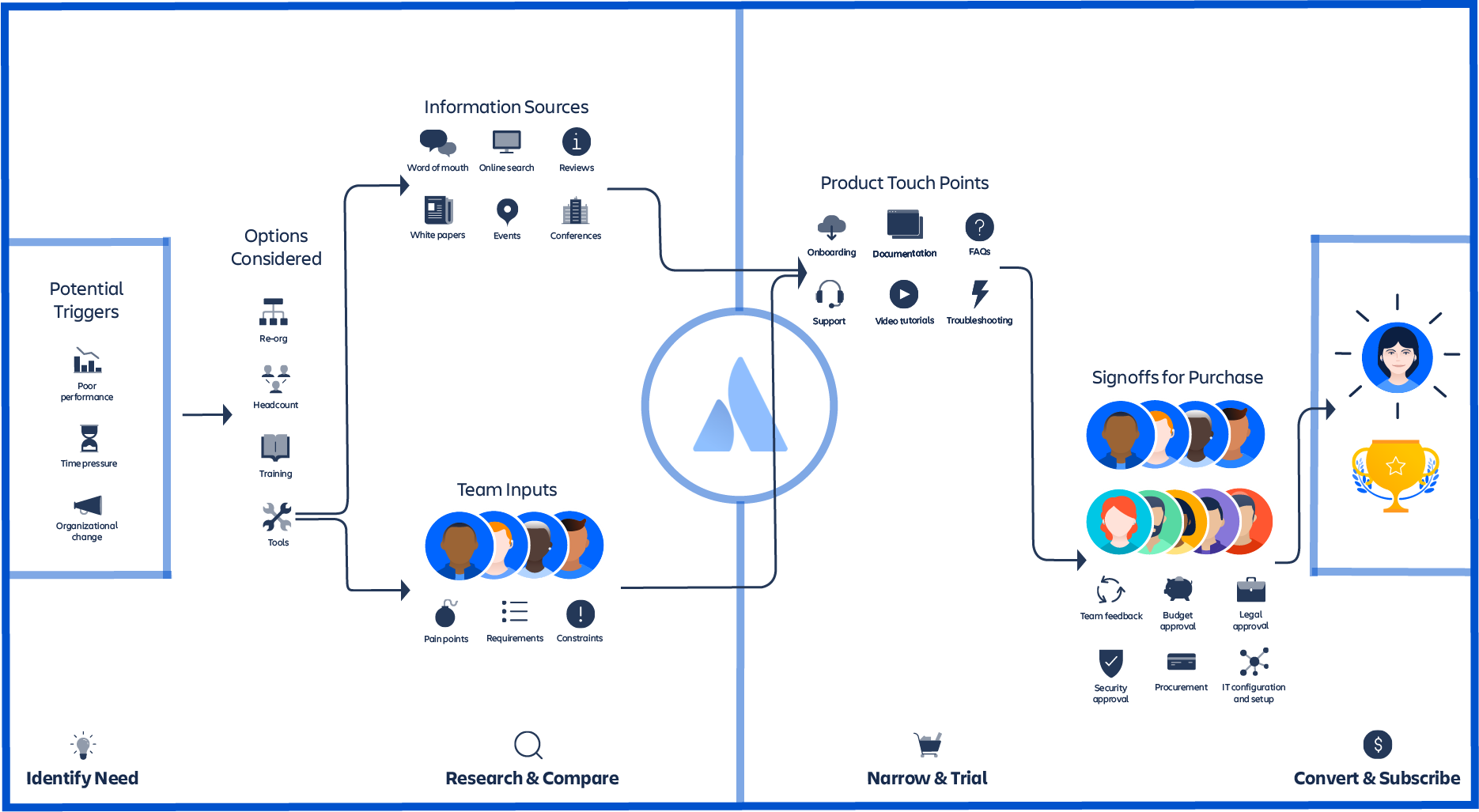
Buyer Experience
During a 12-week summer internship, I conducted design research for the buyer experience team at Atlassian. This included 25 stakeholder interviews as well as 3 iterative approaches to communicate customer perspectives in novel, actionable ways.
Contributions
Interviewing
Observation
Synthesis & Ideation
Task Analysis
Illustration
Collaborators
Nicole Tollefson
Shona Reed
Panna Cherukuri
Background
Atlassian is an enterprise software company with a unique self-service sales model. This means pricing is transparent, and customers are able to make purchases directly on the website, without having to haggle with a sales person. This approach helps to lower product prices, as the company does not bear the cost of employing a traditional sales force.
Despite these advantages, some customers could benefit from the guidance of a contact person while making the decisions required to purchase Atlassian’s software. The purchasing process is complex, dependent on company size (or number of licenses), geographic market, and whether the customer is new or returning – not to mention the various product bundles and deployment options.
Overview
Given Atlassian’s growth and success, there had been a longstanding sense of “tribal knowledge” that the self-service model was sufficiently easy to use. Recent work to better understand buyer journeys had revealed major pain points, however, and was informing strategic decisions for the upcoming fiscal year. I was asked to deliver an artifact for internal stakeholders that would help keep the buyer’s perspective top of mind while making everyday decisions. Thus, the primary research questions were:
- How might we generate customer empathy while considering stakeholder needs?
-
How might we communicate the buyer experience in a clear and compelling way?
How might we generate customer empathy while considering stakeholder needs?
Reviewing secondary research
To gain a better grasp of organizational context, I began by reviewing prior visualizations that had been well socialized, as well as existing buyer journey work done by internal product teams. Though all teams had started with the same template, the resulting artifacts took divergent forms, spanning three slide decks, nine Trello boards, and too many intranet pages to count.
These existing journeys were difficult to digest for those not already “deep in the weeds.” Furthermore, they were based on various types of data sources – including surveys, experiments, customer interviews, and internal workshops – and did not consider the overall Atlassian purchasing process. To make sense of all this qualitative data, I created a few Trello boards of my own, looking for overarching – and when possible, product-agnostic – themes.

︎Synthesizing common pain points in the purchasing process. Each colored bar indicates a product label; cards with multiple colors thus indicate a common theme across products.
Cross-functional stakeholder interviews
As I was diving into these buyer journeys, I also conducted a listening tour with 25 stakeholders across design, research, development, product management, marketing, and customer advocate roles. During this process, I came to see that that while people are motivated to improve the buyer experience, their priorities are focused on their own workflows or products rather than the overall customer experience.
These conversations helped to identify four major requirements for any type of customer-centric messaging or artifact: brevity, flexibility, actionability, and credibility. Furthermore, the interviews led to an epiphany: while Atlassian’s mission is to “unleash the potential of every team,” many stakeholders didn’t realize that even before product use, purchasing is also a team effort, with input from legal, security, and procurement departments.
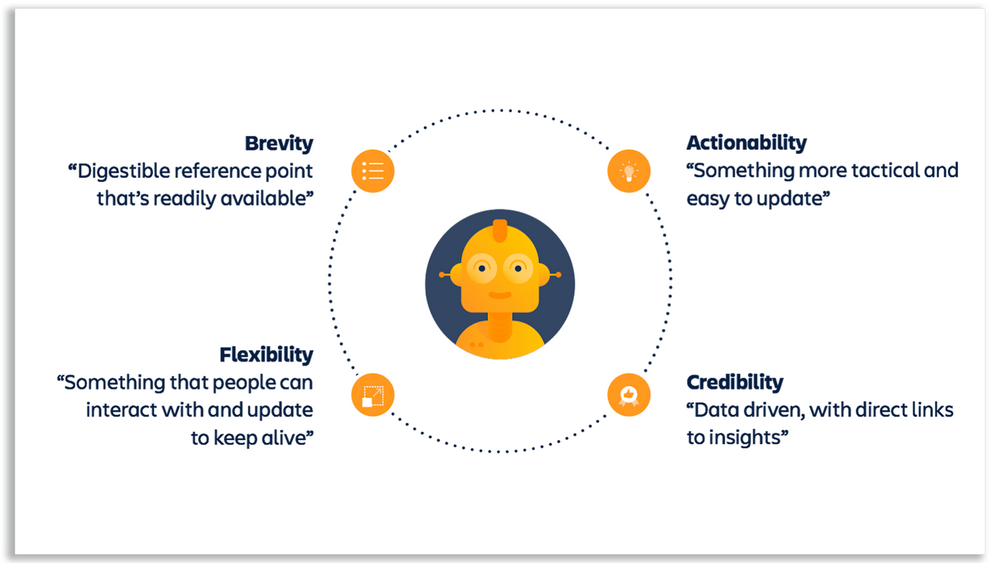
︎Requirements identified from interviews with 25 cross-functional stakeholders.
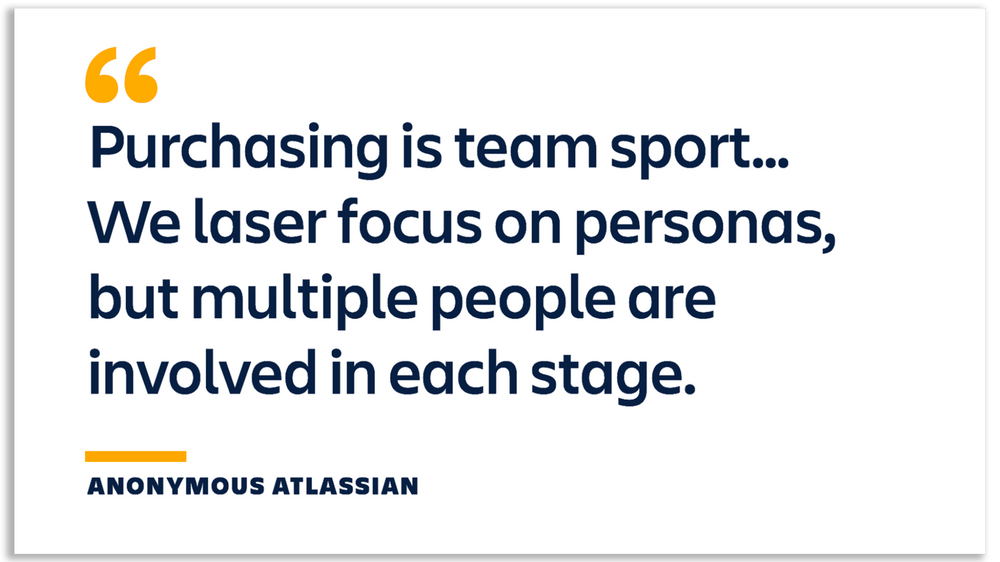
︎A key takeaway from conducting interviews.
How might we communicate the buyer experience in a clear and compelling way?
Pain points as comics
In an attention-scarce environment, brevity seemed both a novel and necessary contrast to the documentation that already existed. One approach I pursued was to create comics, inspired by webcomicname’s three-panel comics with a blob as the protagonist, always ending with “Oh no.” These succinct visual reminders of customer pain would ideally be propagated in relevant everyday communication channels such as intranet pages and chat rooms.
Furthermore, using humor to communicate pain points would help to diffuse any blame or shame that people might feel when pain points are constantly emphasized, promoting empathy over negativity. While not specifically actionable (nor well illustrated, for that matter), the format offers a simple, visual reminder of customer perspectives that can be easily shared – and ultimately aims to shift culture at a grassroots level.
 ︎Illustrating how purchasers often face internal resistance to adopt new software.
︎Illustrating how purchasers often face internal resistance to adopt new software.
︎Customers often struggle to evaluate Atlassian’s complex products, within the short timeframe of the allotted trial period.

︎At the time of this project, Atlassian only accepted a limited number of currencies, creating friction for its international customers.
Sports field visualization kit
Another more flexible approach I took was inspired by board games and the World Cup, both of which I observed employees engaging with at the office. To highlight the complexity and players of the purchasing process, I wanted to leverage Atlassian’s existing emphasis on team work to reframe customer-centric messaging in a way that would be relatable to internal stakeholders.
I imagined movable components on a sports field background to show the buyer experience in a quick and engaging way, during meetings or onboarding sessions. A digital version could be stitched together into a GIF, then – like the comics – saved and shared in common communication channels.


︎An example GIF of a visualization kit prototype in use on a whiteboard.
Top tasks benchmarking survey
Revisiting the identified requirements, however, I realized that both of these approaches were brief or flexible, but not necessarily actionable or credible. Additionally, I had reservations about whether either format would live on after the duration of my summer internship, once I had returned to my graduate program.
At this point, I luckily became aware of the Research & Insights team’s new benchmarking initiative, using Jerry McGovern’s top tasks method. This approach would be credible, given that it is customer led, and it would dentify actionable priorities. It would also ensure longevity beyond my internship as the Research and Insights team intended to continue the work over the next few years.
I thus redirected my efforts to develop a top tasks survey, revisiting existing documentation to generate a master list of tasks; I also returned to internal stakeholders I had previously interviewed to gather feedback in adjusting language and granularity of tasks.
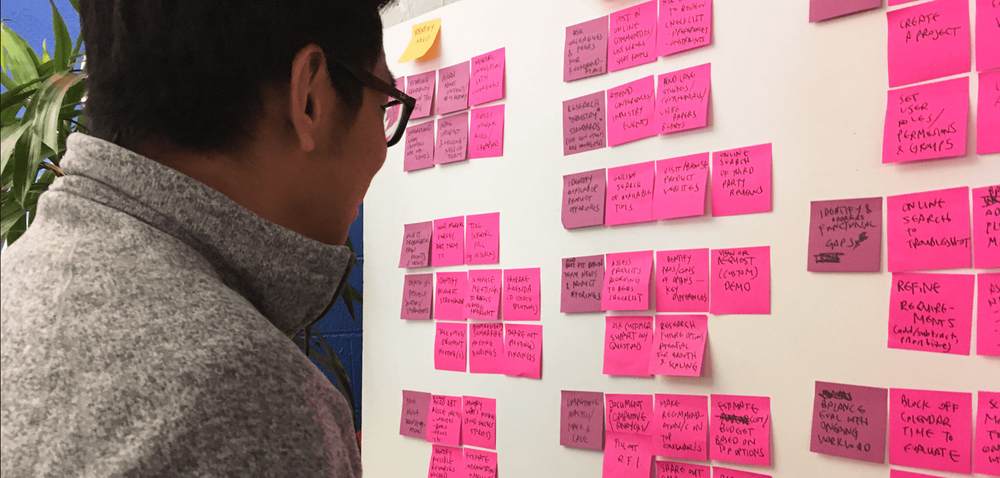

Outcomes
I was unfortunately not able to see the top tasks survey through to completion before my internship ended. However, my work in the final few weeks did generate a master list of tasks that the Research and Insights team would use to administer the top tasks survey; this would ultimately meet the goal of identifying a brief, actionable, and credible list of customer priorities. After my departure, I was also informed that my comics were discovered by the Head of the Design Studio, who found them resonant and had them printed on posters for every office.
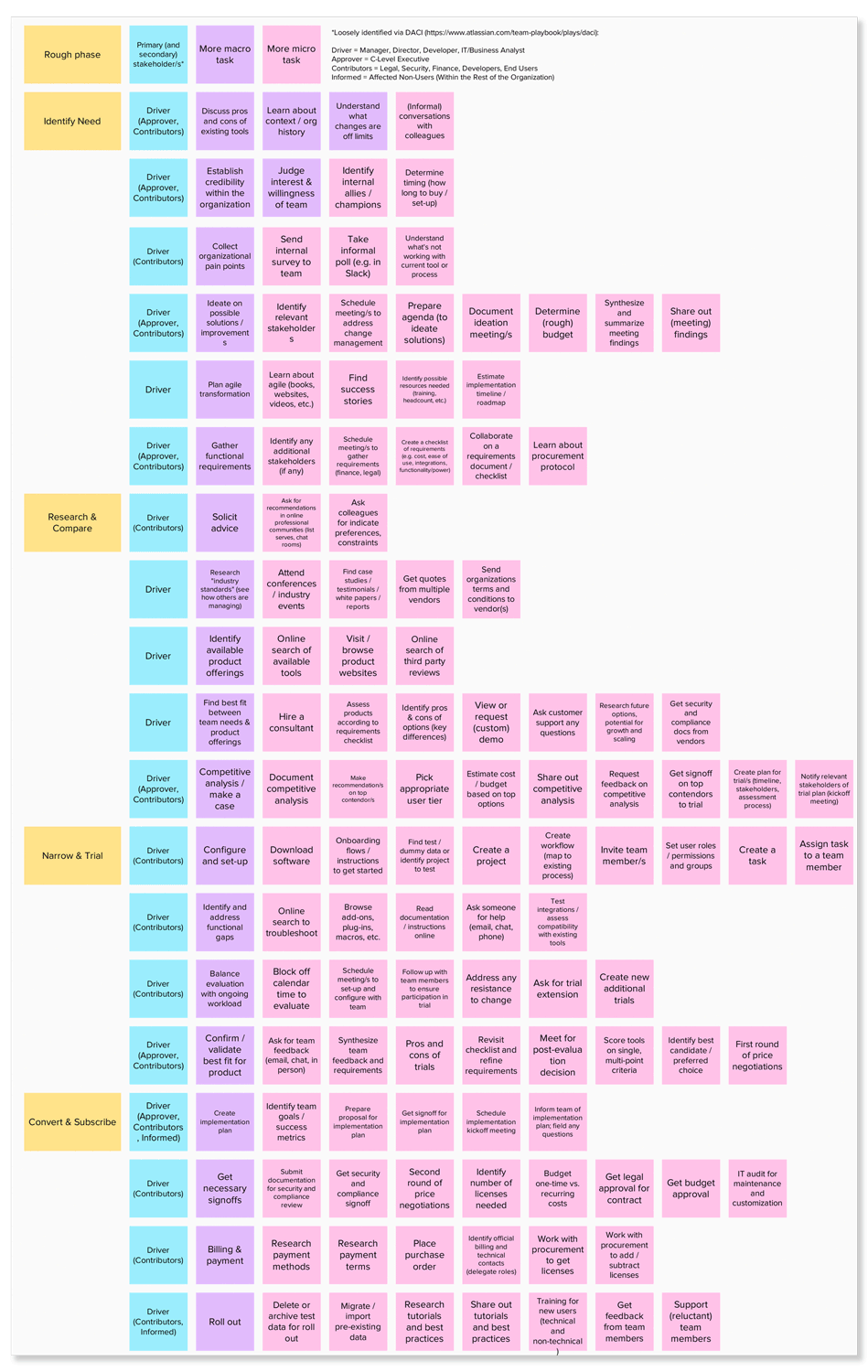
︎Master list of top tasks generated, rendered on Mural.

︎Printed poster of comics in the San Francisco office.
Takeaways
This project was valuable in learning not to be afraid to question a prompt, as well as to exercise rigor in validating any existing data. Given that the project was largely self-directed, I also gained experience in managing expectations as well as seeking assistance when necessary. Furthermore, despite the desire to demonstrate the value of my work as an individual, I came to understand the importance of folding efforts into larger-scale initiatives to ensure longevity of impact.